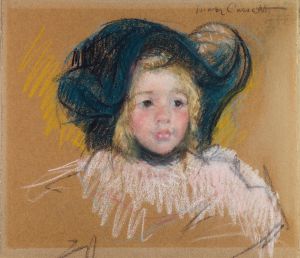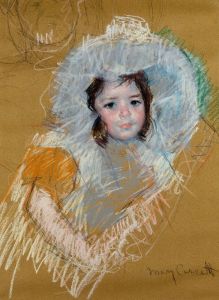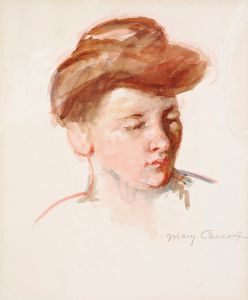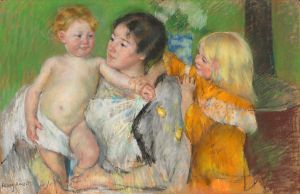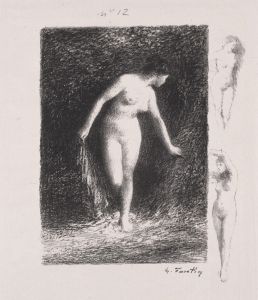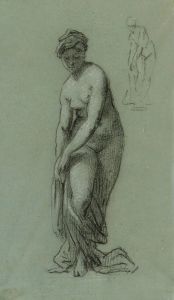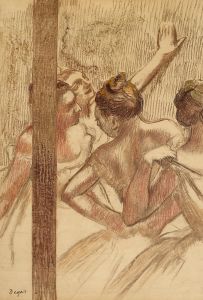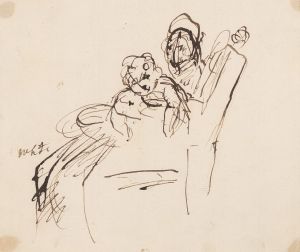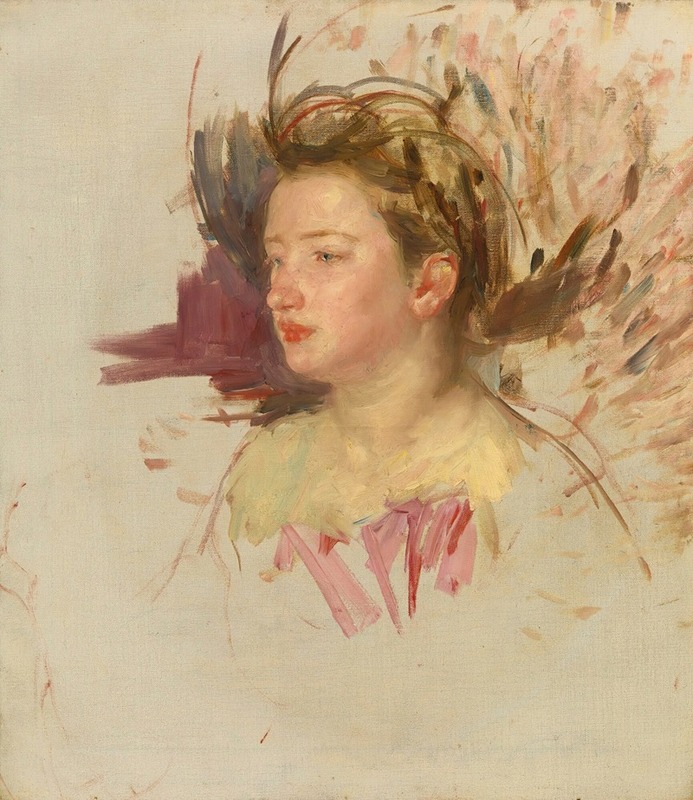
Sketch of Antoinette
A hand-painted replica of Mary Cassatt’s masterpiece Sketch of Antoinette, meticulously crafted by professional artists to capture the true essence of the original. Each piece is created with museum-quality canvas and rare mineral pigments, carefully painted by experienced artists with delicate brushstrokes and rich, layered colors to perfectly recreate the texture of the original artwork. Unlike machine-printed reproductions, this hand-painted version brings the painting to life, infused with the artist’s emotions and skill in every stroke. Whether for personal collection or home decoration, it instantly elevates the artistic atmosphere of any space.
Mary Cassatt, an American painter and printmaker, is renowned for her contributions to the Impressionist movement and her focus on the intimate lives of women and children. One of her lesser-known works is the "Sketch of Antoinette," which exemplifies her skill in capturing the subtleties of human expression and form through her adept use of pastels and oils.
Mary Cassatt was born on May 22, 1844, in Allegheny City, Pennsylvania, and spent much of her adult life in France, where she became closely associated with the Impressionists. Her work often depicted the private and social lives of women, emphasizing the bond between mothers and children. Cassatt's style is characterized by its bright colors, loose brushwork, and an emphasis on capturing the fleeting moments of everyday life.
The "Sketch of Antoinette" is a testament to Cassatt's ability to convey emotion and character with minimalistic yet expressive lines. Although specific details about the creation date and the subject, Antoinette, are not widely documented, the sketch reflects Cassatt's typical approach to portraiture. Her sketches often served as studies for larger works or as standalone pieces that captured the essence of her subjects with immediacy and intimacy.
Cassatt's technique in this sketch likely involves the use of pastels, a medium she favored for its ability to blend colors softly and create a sense of immediacy. Pastels allowed Cassatt to work quickly, capturing the spontaneity of her subjects' expressions and gestures. This medium also enabled her to experiment with color and light, key elements of the Impressionist style.
The subject of the sketch, Antoinette, is portrayed with a focus on her facial expression and posture, elements that Cassatt used to convey personality and mood. The simplicity of the sketch highlights Cassatt's skill in using minimal detail to achieve a powerful representation of her subject. This approach aligns with the broader Impressionist movement, which sought to capture the essence of a moment rather than the precise details.
Mary Cassatt's work, including pieces like the "Sketch of Antoinette," played a significant role in the acceptance of Impressionism in America. Her participation in the Impressionist exhibitions in Paris and her connections with art collectors in the United States helped to introduce and popularize the movement across the Atlantic. Cassatt's influence extended beyond her paintings; she was also an advocate for women's suffrage and used her art to challenge traditional gender roles.
In summary, while specific details about the "Sketch of Antoinette" are limited, the work is representative of Mary Cassatt's broader artistic achievements. Her ability to capture the nuances of human expression and her contributions to the Impressionist movement have cemented her place as a pivotal figure in art history. Through her sketches and paintings, Cassatt offered a unique perspective on the lives of women and children, leaving a lasting impact on both the art world and society at large.





